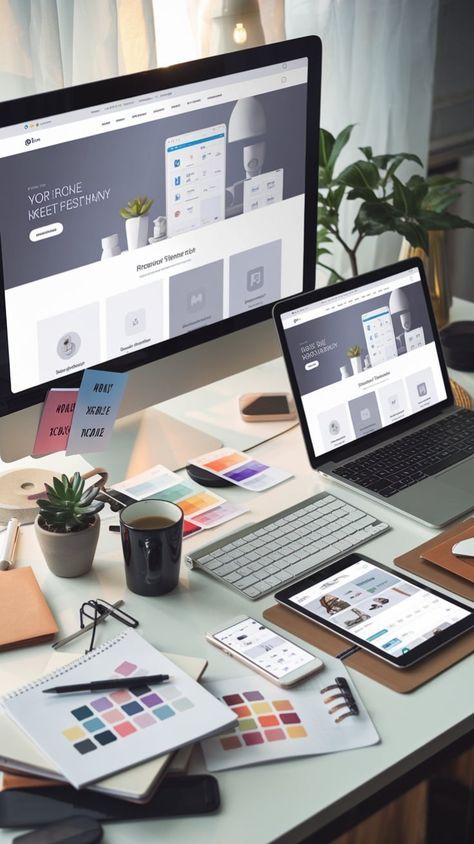“Learn how to create a freelance portfolio with no experience that highlights your skills and attracts real clients.”

aisha arif
June 10, 2025

Build a standout freelance portfolio with no experience by showcasing your skills, passion, and potential. This guide shares beginner-friendly strategies to help you attract your first clients and confidently start your freelancing journey online.
Why You Need a Freelance Portfolio with No Experience
Your portfolio is more than a showcase—it’s your digital resume, proof of ability, and your first handshake with potential clients.
Even if you’re starting from zero, a well-crafted freelance portfolio with no experience can still convince clients that:
You take freelancing seriously
You have raw talent and initiative
You’re capable of delivering real value
Believe it or not, clients often care more about what you show than how long you’ve been working. A smart, clean, and skill-focused portfolio builds trust—no job history required.
7 Proven Ways to Build a Freelance Portfolio Without Experience
1. Create Sample Projects (for Imaginary or Real Brands)
No clients? No problem.
If you’re building a freelance portfolio with no experience, the smartest way to start is by creating mock projects that showcase your skills.
Pick 2–3 industries or business types you’re interested in, then develop custom pieces for them. These should reflect the kind of work you eventually want to get paid for.
Example ideas:
Design a logo for a trendy coffee shop
Write a blog post for a fictional eco-travel brand
Create a sample video edit for a fitness coach’s YouTube intro
Draft a landing page for a made-up online course
Pro tip: Include a short description under each piece:
“This sample Instagram carousel is designed for a vegan bakery targeting Gen Z. I used pastel visuals and conversational captions to boost engagement.”
Even if it’s not real client work, this shows your creativity, intent, and readiness to deliver value—exactly what potential clients want to see.
2. Offer Free Work Strategically
Yes, I said free, but wait—don’t do it for everyone.
Choose:
Local small businesses
NGOs
Startups
Student entrepreneurs
Offer 1–2 pieces of free work in exchange for:
A testimonial
A portfolio sample
A LinkedIn recommendation
Rule: Keep it limited. Your time is valuable.
3. Use Personal Projects to Showcase Skills
Are you:
Writing a blog?
Designing for your Instagram?
Creating content for your own brand?
Use that as part of your portfolio.
Real example: A student who runs a meme page and edits reels can use that to show:
“Grew page from 0 to 10K followers in 6 months using trend-based short video content.”
4. Document Your Creative Process
When building a freelance portfolio with no experience, don’t just show the final product—show how you got there.
Clients appreciate transparency and want to understand your approach. Sharing the “how” behind your work builds credibility and gives your portfolio a professional edge.
Include:
Screenshots or screen recordings of your workflow
Before-and-after visuals (e.g., raw photo → edited version)
Drafts and final versions of written content
Example captions to include:
“Used Canva and a color psychology guide to create this clean, minimalist logo.”
“Transformed a rough outline into a polished SEO blog post using Grammarly and Surfer SEO.”
By documenting your process clearly, you prove that you understand the tools, strategy, and creative thinking behind the work—making up for the lack of paid experience.
5. Build a Free Website or Use Portfolio Platforms
Use free tools to host your portfolio:
Notion (stylish + customizable)
Adobe Portfolio (free with Creative Cloud)
Tip: Always include a downloadable PDF version or link you can share easily with clients.
6. Showcase Testimonials or Social Proof
If someone loved your work—even if it was free—ask them for a short review. Post it with:
Their name
Company (or Instagram handle)
A one-line feedback
Testimonial example:
“Aisha delivered a stunning logo for our NGO campaign in 2 days. Highly recommend her creativity and speed.” – Neha J., Local NGO
7. Highlight Your Tools + Soft Skills
Your portfolio isn’t just about design or writing—it’s about how you work.
Include:
Tools: Canva, Adobe, ChatGPT, Figma, CapCut, etc.
Skills: Communication, time management, teamwork
Student freelancers: Include academic achievements, volunteer roles, or any leadership work.
BONUS: Add Visuals, Not Just Words
People scan portfolios. So:
Use bullet points
Keep it clean and minimal
Use mockups (laptop, phone screen) for your samples
Canva offers free templates like “Portfolio Presentation” – edit, download, and send!
YouTube Video Recommendation
Watch this:
“How to Build a Freelance Portfolio With No Experience (Step-by-Step)”
https://youtu.be/DvMNG6MUlGI?si=JrGtG5f9KceWeNes
By: Mia Juan – A great breakdown of visual and content portfolios.
EEAT Advice (For Building Trust with Clients)
E – Expertise
Even if you’re new, build expertise by:
Practicing daily
Learning tools
Studying top freelancers in your field
E – Experience
Create your own experiences: internships, college projects, or side projects. Document them well.
A – Authority
Start a blog, Instagram page, or YouTube channel where you share your learning. It builds credibility.
T – Trustworthiness
Use your real name
Show your face (if comfortable)
Deliver what you promise
Communicate professionally (even via email)
Final Words: Everyone Starts Somewhere
No freelancer was born with a perfect portfolio. The best freelancers built theirs step-by-step—with practice, intention, and consistency.
So even if you’re a student or beginner with no client work, start today with what you have.
Every project you create, big or small, becomes a brick in your foundation.
Now that you know how to build a portfolio without experience, the next step is applying for work. Read How Do I Get My First Freelancing Work? for practical tips to get hired faster.
Call to Action:
If you found this helpful, share it with a friend who’s starting freelancing too.
Or drop your Instagram / Behance / website link in the comments below—I’d love to check out your portfolio!